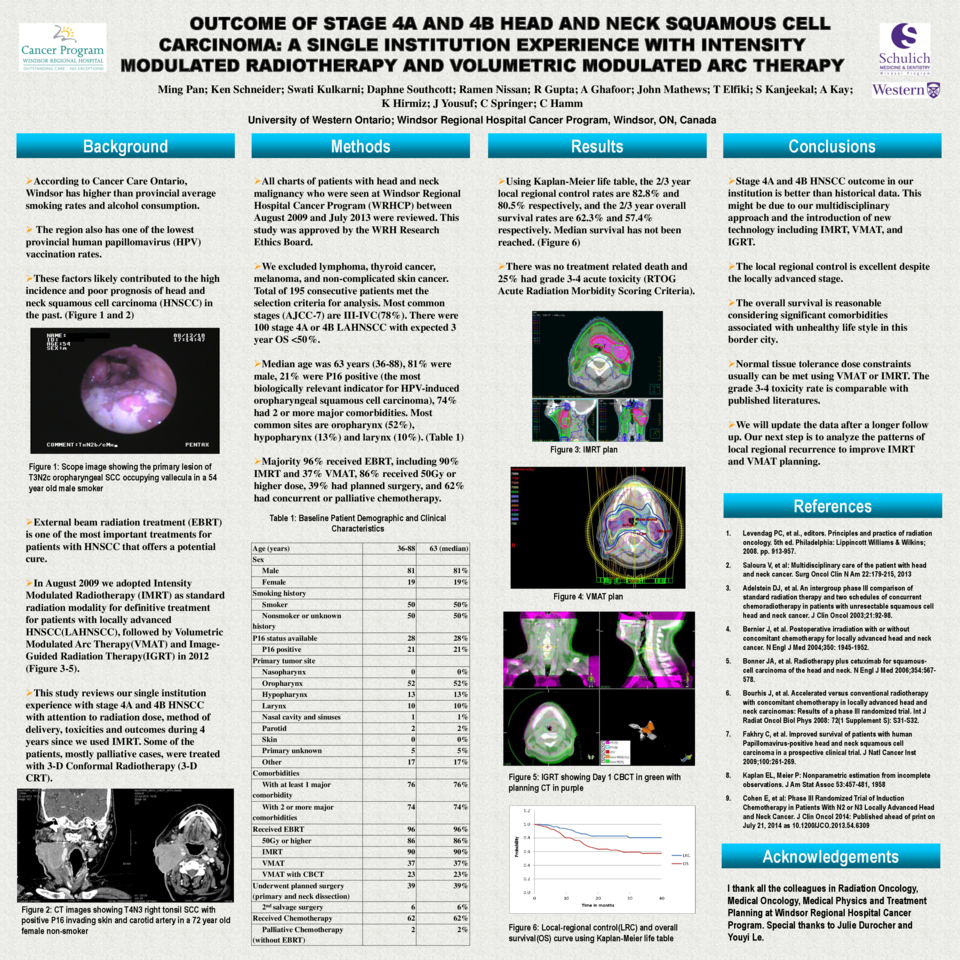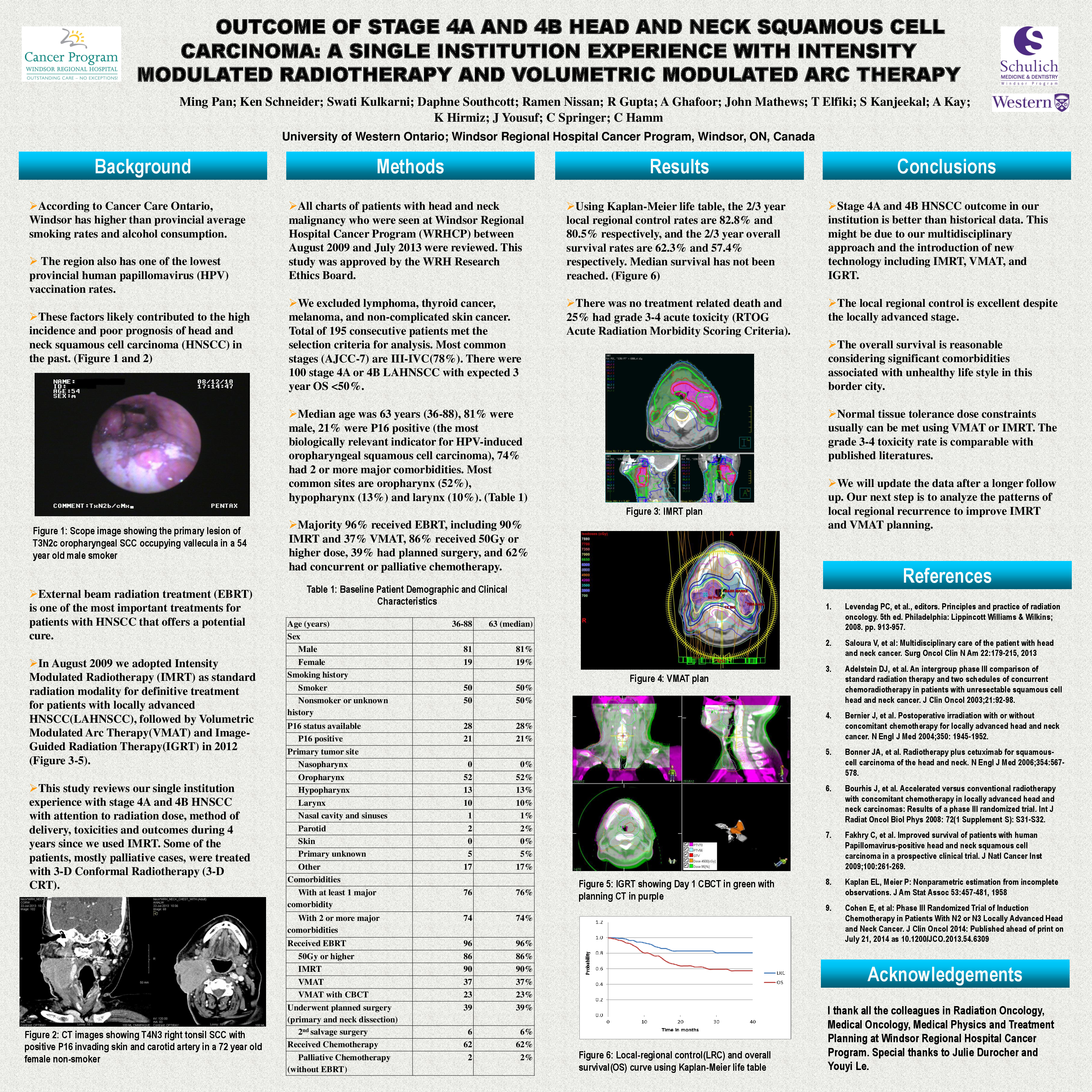Abstract
Purpose: Our region has higher than provincial average smoking rates and alcohol consumption and lower human papillomavirus (HPV) vaccination rates. These have contributed to high incidence and poor prognosis of Head and neck squamous cell carcinoma (HNSCC) in the past. This study reviews our single institution experience with stage 4A and 4B HNSCC outcomes during 4 years since we adopted Intensity Modulated Radiotherapy (IMRT), Volumetric Modulated Arc Therapy (VMAT) and Image-guided Radiation Therapy (IGRT).
Method: All charts of patients with head and neck malignancy between August 2009 and July 2013 were reviewed. Total of 195 consecutive patients met the selection criteria for analysis. There were 100 stage 4A or 4B locally advanced HNSCC (AJCC-7).
Results: Median age was 63 years (36-88), 81% were male, 21% were P16 positive (the most biologically relevant indicator for HPV-induced oropharyngeal squamous cell carcinoma), 74% had 2 or more major comorbidities. Most common sites are oropharynx (52%), hypopharynx (13%) and larynx (10%). Majority 96% received radiotherapy, including 90% IMRT and 37% VMAT, 86% received 50Gy or higher dose, 39% had surgery, and 62% had chemotherapy. Using Kaplan-Meier life table, the 2/3 year local regional control rates are 82.8% and 80.5% respectively, and the 2/3 year overall survival rates are 62.3% and 57.4% respectively. Median survival has not been reached. There was no treatment related death and 25% had grade 3-4 acute toxicity (RTOG Acute Radiation Morbidity Scoring Criteria).
Conclusion: Stage 4A and 4B HNSCC outcome in our institution is better than historical data. This might be due to our multidisciplinary approach and the introduction of new technology including IMRT, VMAT, and IGRT. Normal tissue tolerance dose constraints usually can be met using IMRT or VMAT. The local regional control and overall survival is excellent despite significant comorbidities associated with unhealthy life style in this region.





